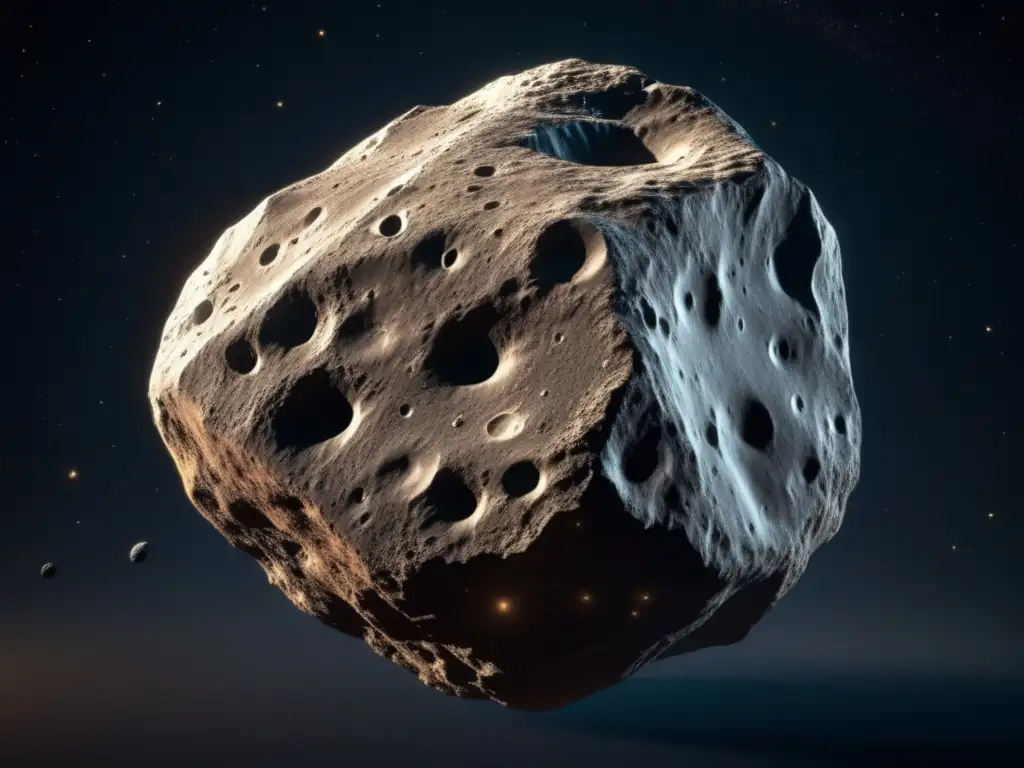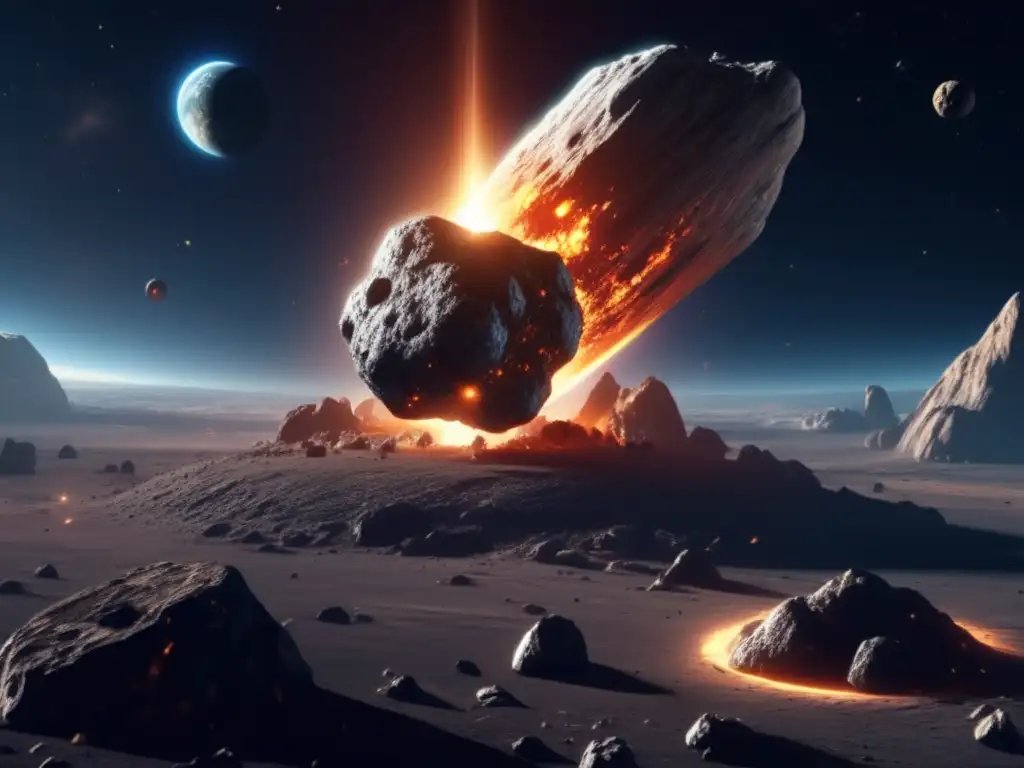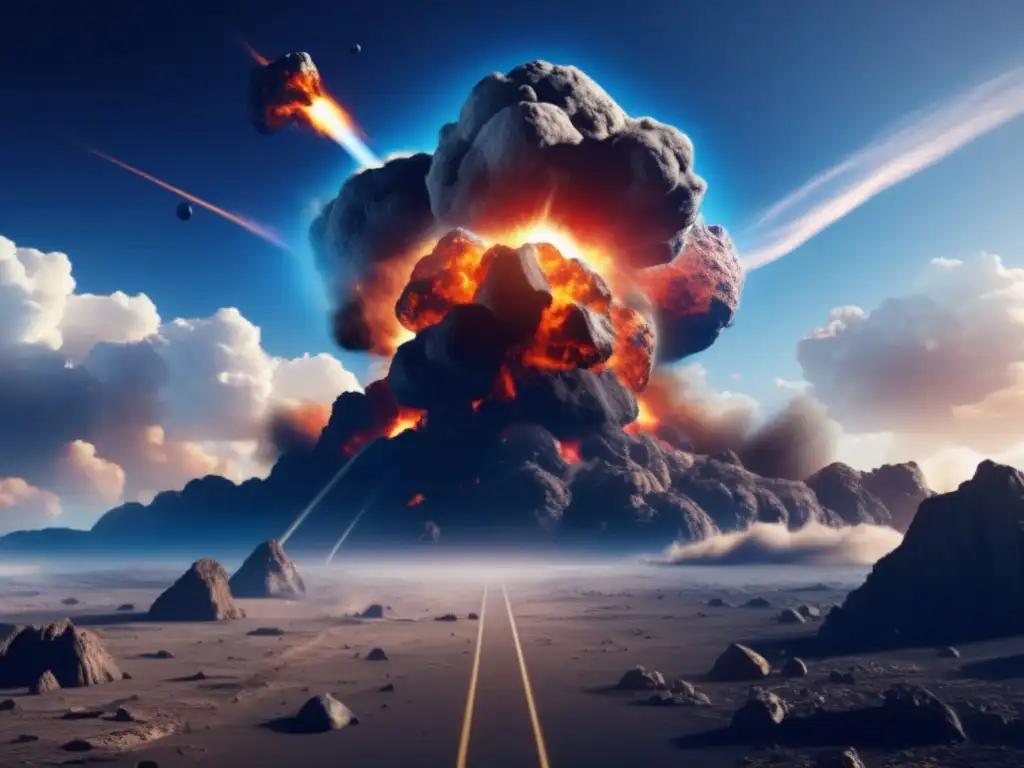Gauging The Threat: Asteroid Sizes And Impact Severity

Introduction
Asteroid impacts have been a major subject of interest for scientists and enthusiasts alike for decades. With advancements in technology, we now have the ability to detect and track asteroids more accurately than ever before. However, predicting the potential impact severity of an asteroid can be a complicated process influenced by its size, composition, speed, and angle of approach. This article will explore the relationship between asteroid sizes and impact severity, assessing just how much of a threat these cosmic rocks pose to our planet.
The Basics: Asteroid Sizes and Categories

Asteroid Sizes
Asteroids are classified based on their size, with the smallest ones being less than 1 meter across, and the largest ones measuring several hundred kilometers in diameter. According to NASA's Near Earth Object (NEO) Program, there are currently over 25,000 known near-earth asteroids with diameters ranging from 1 to over 1000 meters.
To better understand the potential damage an asteroid could cause upon impact, it is useful to categorize them according to their size. There are three main categories of asteroids determined by their diameters:
- Near-Earth Objects (NEOs): less than 140 meters in diameter
- Mid-Sized Asteroids: between 140 meters and 1 kilometer
- Giant Asteroids: over 1 kilometer in diameter
Asteroid Categories
Apart from their size, asteroids are also categorized based on their composition, shape, and other physical characteristics. The two main categories of asteroids are rocky and metallic. Rocky asteroids are composed mainly of silicate minerals like olivine and pyroxene, while metallic asteroids are made up of mainly iron and nickel.
Impact Severity and Asteroid Size

The Impact Equation
The potential severity of an asteroid impact is dependent on several factors, including the asteroid's size, speed, angle of approach, and composition. To gauge the potential impact severity of an asteroid, researchers use a mathematical formula known as the Impact Energy Equation.
The formula calculates the amount of kinetic energy released upon impact, which is directly proportional to the asteroid's mass and speed. The equation is:
Kinetic energy = 0.5 x mass x velocity^2
This calculation shows that the impact energy increases exponentially as asteroid size and speed increase, making larger asteroids more dangerous.
Near-Earth Objects (NEOs)
NEOs are the smallest category of asteroids with diameters less than 140 meters. These asteroids typically burn up in the atmosphere upon entering the earth's atmosphere, or they may break apart due to the increasing air resistance. However, if an NEO is large enough to survive atmospheric entry, it can cause significant damage upon impact.
The Chelyabinsk meteor that exploded over Russia in 2013 was only 20 meters in diameter, but it still caused widespread damage, injuring over 1500 people and damaging thousands of buildings.
Mid-Sized Asteroids
Asteroids between 140 meters and 1 kilometer in diameter can cause even more damage upon impact. If such an asteroid hit the earth, it could cause widespread destruction in the surrounding area, including a crater several kilometers in diameter, a shockwave that could level buildings, and a global climate change event.
In 1908, an asteroid estimated to be between 50-80 meters in diameter exploded over Siberia, resulting in the Tunguska event. Though no one was killed, the explosion leveled over 80 million trees and caused significant damage over an area of over 2000 square kilometers.
Giant Asteroids
Giant asteroids with diameters larger than 1 kilometer pose the greatest threat to our planet. An asteroid of this size would release energy equivalent to billions of nuclear bombs upon impact, leading to a global catastrophe.
The impact event that killed the dinosaurs 65 million years ago is believed to have been caused by an asteroid measuring 10 kilometers in diameter. The impact resulted in a crater over 180 kilometers in diameter, caused tsunamis thousands of feet high, and led to the extinction of over 75% of the earth's species.
Frequently Asked Questions

-
What is the likelihood of an asteroid impact?
The chances of an asteroid impact causing significant damage to our planet is low. However, the potential consequences of such an impact are so severe that it is crucial to identify and track all NEOs to prepare for such an event.
-
How are asteroids detected and tracked?
Asteroids are detected using ground-based telescopes and satellites that help us to map their orbits and predict their future paths. NASA's NEO program is responsible for tracking all near-earth asteroids.
-
Can we deflect or destroy an asteroid before it hits the Earth?
Several methods have been proposed for deflecting or destroying an asteroid before impact. These include laser ablation, kinetic impactors, and gravity tractors.
-
Are there any plans for protecting the Earth from asteroid impacts?
Various organizations and initiatives, including NASA's Planetary Defense Coordination Office, are working to develop strategies for protecting the Earth from asteroid impacts. These include deflecting or destroying the asteroid before impact and developing evacuation plans in case of an imminent impact.
-
What should I do if an asteroid is heading towards Earth?
If an asteroid is heading towards Earth, the best thing to do is to follow the guidelines provided by your local authorities and seek shelter in a sturdy structure or evacuate the area if necessary.
Conclusion
Asteroid impacts have the potential to cause significant damage to our planet, but such impacts are rare. The likelihood of an asteroid causing a catastrophic event is low, but it is crucial to continue tracking and analyzing asteroids to ensure we are prepared for such an event. While there is no sure-fire way to prevent an asteroid impact, continuing research and development of deflection strategies means that we can better prepare ourselves for such an eventuality.
Thank you for taking the time to read this article. We hope you found it informative and valuable. If you have any thoughts or questions, please feel free to share them in the comments section below.
Additional Resources

- NASA's Near-Earth Object Program
- Infographic: Dangerous Asteroids Flybys of Earth (Space.com)
- TED Talk: How to protect Earth from asteroids (Phil Plait)
 The Sky Is Falling: Myth And Reality Of Asteroid Impacts
The Sky Is Falling: Myth And Reality Of Asteroid Impacts Impacts From Above: A Chronology Of Major Asteroid Strikes
Impacts From Above: A Chronology Of Major Asteroid Strikes Asteroid Impact Sites: Geographical Wonders From Space
Asteroid Impact Sites: Geographical Wonders From SpaceIf you want to discover more articles similar to Gauging The Threat: Asteroid Sizes And Impact Severity, you can visit the Asteroid Impacts category.
Leave a Reply

Articulos relacionados: